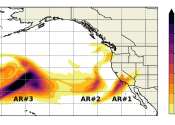Study suggests Io's volcanoes have been active for 4.5 billion years
A team of geologists and planetary scientists from the California Institute of Technology, the University of California Santa Cruz, New York University, and NASA Goddard Space Flight Center reports evidence that Io's volcanic ...









